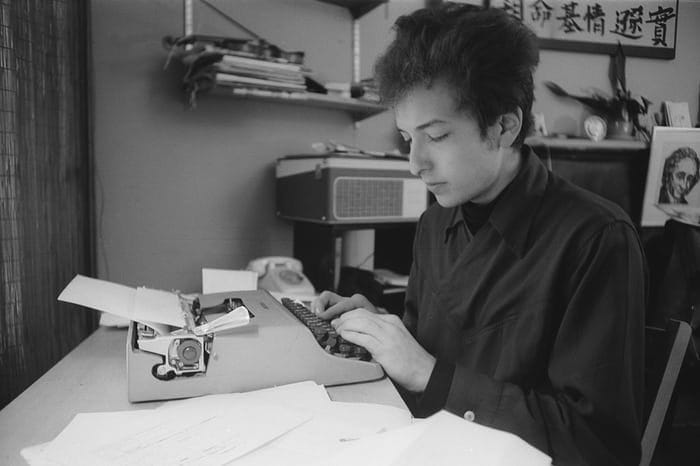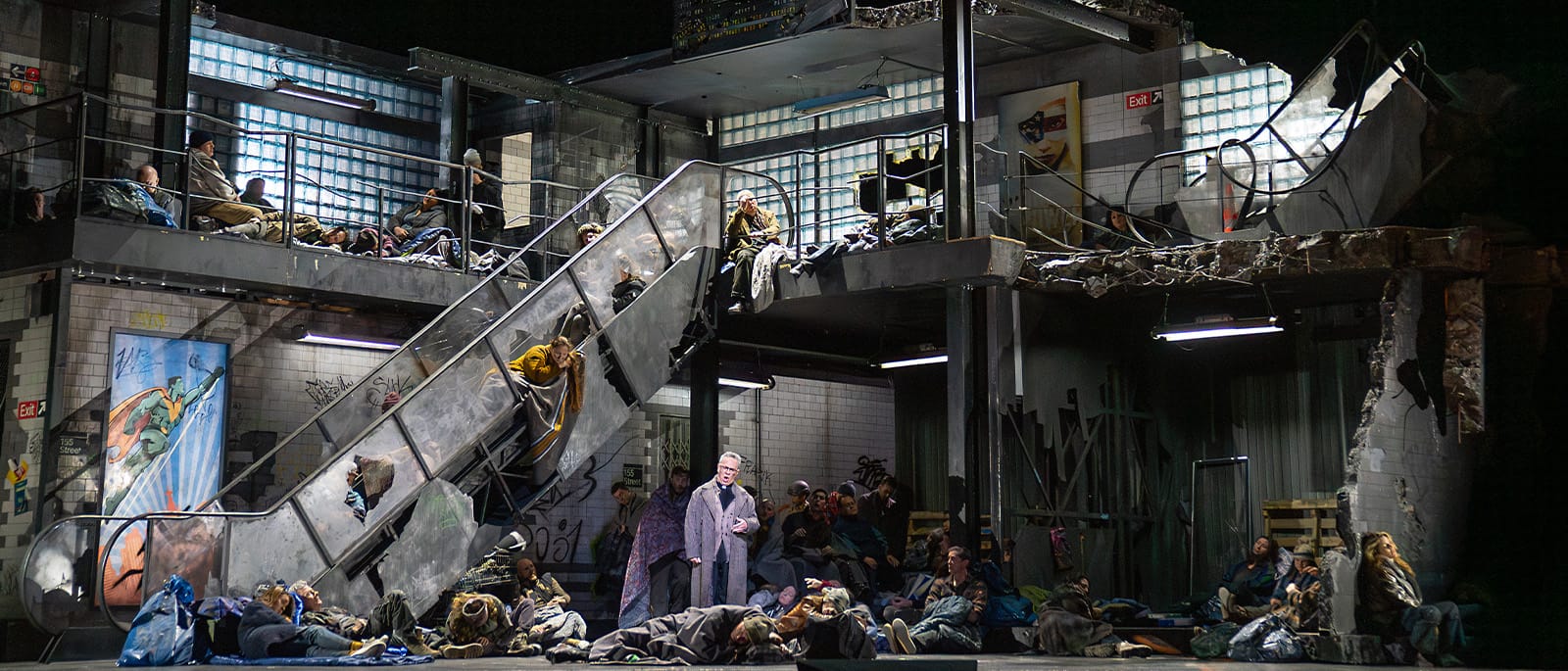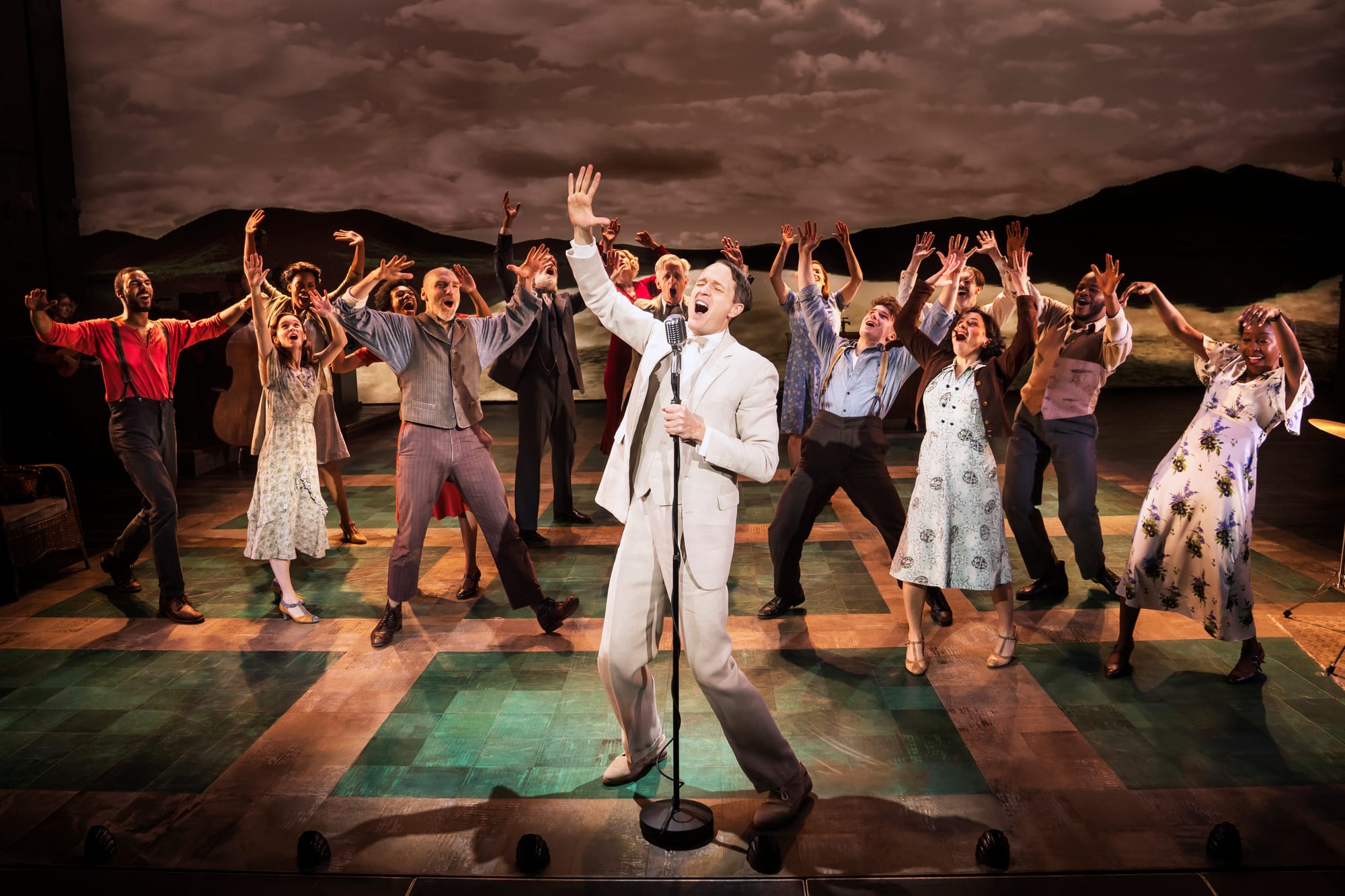I Didn’t Write About… (Vol. 2)

Hello to my dear subscribers, who haven’t heard from me in a while. I recently turned in the manuscript for my second book (technically incomplete until Timothée Chalamet graces us with his Bob Dylan impression, but I wrote all I can for now), which had been occupying most of my attention for the past few months. In the meantime, I have consumed some media that might have been worth writing about in a properly crafted way if I’d had the wherewithal shortly thereafter. Instead of dedicated posts on each of these, though, I’ll do another catch-up digest that releases me from the responsibility of thoughtfully shaping these things. Thus, I present the another edition of:
I Didn’t Write About…
Josh Ritter’s February 16 show at Paradise Rock Club, Boston, MA
I have seen Josh Ritter more times than I can count. That’s not a figure of speech; I lost track years ago and would never be able to catalog them all now. I’ve been watching Josh shows since 2006. I’ve seen him solo, with full bands, and with more than one symphony orchestra. I even performed with him once upon a time (alongside my college a cappella group, when he made a tour stop at our school for whatever reason). Josh’s music is tremendously, tremendously important to me.
This winter, he toured for the 20th anniversary of his album Hello Starling, and the first of his two Boston shows was…an odd night. Hello Starling only comprised about half the setlist, with the evening bracketed by newer material. That meant the middle of the show was devoted to an often slow, rarely danceable album, which is fine, except…we were all standing around at a rock club. It’s a tough choice to play an album so predominantly quiet. On top of this, Josh spent much of the time between songs spinning a strange sort of personal folk history concerning his family’s life in Idaho, which he elevated into a tall tale saga that…just didn’t really hang together. During the lull after the bridge of “Kathleen,” he told such a lengthy and elaborate apocryphal story (something about a cardboard car he used to drive around; it was a vague yarn) that he forgot where he was in the song and wound up starting over. “That was a mistake,” he admitted afterwards. I can’t complain about hearing "Kathleen" twice in a row, but still! Josh! Focus up!
The show fell two nights after Valentine’s Day, and it was the second Ritter Valentine’s show that I’ve seen. He has a habit of soliciting dedications from the crowd in the days before these shows (like, he’ll read your message aloud on mic; it’s not about requesting songs), giving concertgoers the opportunity to fill out a Google form in the hopes Josh will deliver your words of affection for your concert companions. At the Valentine’s show in 2011, this was a consistent and joyful element of the show. This time around, the dedications felt perfunctory, tucked into the back end of the show and finished shortly after they’d begun. It was an odd, bum note–if you’re going to do the dedications, really do them, y’know?

For as damp as some of the night ended up feeling, there was one moment I found tremendously moving: “I’m just so happy to be alive!” Josh crowed from the stage early in the show, and I was profoundly impacted by the ostensibly simple affirmation. I’m so happy to be alive, myself, and the opportunity to commune with art and artists is a big part of the reason. I’ve recently found myself caught, and moved, by the thought of how many artists are out there right now creating beautiful things that will make it all more bearable. I’m so happy they’re alive, too.
To be really honest, I’m not sure how many more Josh Ritter shows I need to find myself at. It’s been an awesome run, but it’s been a long time since one of his albums really grabbed me, so the setlists are increasingly filling with songs that don’t move me in particular. Still, hearing the night wrap up with “Getting Ready to Get Down,” it was impossible not to get swept up in what Josh advertises as “rock and roll with lots of words.” By that point in the show, I was very much ready to get down.
The Met Live Simulcast of Verdi’s La forza del destino
A few weeks after the Josh Ritter concert, I went back to the movies to see the opera, this time a broadcast of the Met’s new staging of Verdi’s 1862 La forza del destino, a theoretically cursed object (at least based on some reported deaths and other accidents over the years) though this performance went off without a noticeable hitch.
I was drawn to this production for its aggressively audacious reconceptualization of the story’s context. Much like the recent production of Carmen I wrote about towards the beginning of the year, this staging thoroughly modernizes the story, setting it in a war-torn parallel present rather than the 18th century. This allows for a great deal of striking bombed-out imagery, but the production designers didn’t stop there, bringing some pleasantly hallucinatory touches along for the ride (seductive dancers with rabbit-skull masks come to mind). That said, I started to wonder whether the heavy design was drowning the story. At a certain point, once every single choice is being reconsidered and reinvented, is the core of the opera at risk of being suppressed?
This isn't my first Forza, nor the most radical. I’ve seen the video of the classical 1984 Met production, and the video of the 2021 Teatro del Maggio Musicale Fiorentino production, a borderline abstract staging featuring ostentatious retro-futuristic costumes and heavy face paint. For whatever reason, La forza del destino strikes me as an opera that benefits from naturalism, and a period setting. The 2021 staging fell too far on the other side of the line for my needs, distancing the action from the emotional underpinning. I’d say this year’s Met production basically stayed on the right side of the line–but it was close.
This version of the story was highly cinematic, making heavy use of the Met’s massive turntable feature to allow the characters to move between spaces–the overture involved the protagonist pacing between a hotel exterior, a ballroom, and a suite, all of them fully designed and furnished, with the set revolving to highlight whatever space was central to the scene. It’s dazzling, but also demonstrates the Met’s mixed blessing: depending on the production, it can be hard to focus on the story amid the spectacle. The design was stunning, but it felt like it threatened to swallow the characters and their concerns.

In this production, the final act was set in a bombed-out subway station, and the effects were suitably eye-popping, but again, squaring the staging with the storyline distracted from full immersion in the show. The director, Mariusz Treliński, also made one key double-casting choice: the same performer played the roles of the protagonist’s murdered father in the opening, and the priest who assists her later, which allowed for one fairly successful touch: rather than the priest singing some portentous rumination over the tragic ending, the performer stepped back into his Act One costume and became the ghost of the patriarch, delivering the same material but completely altering its meaning.
I’m glad I saw this Forza, though–like Josh Ritter shows–I’m not sure how many more I need. I’ll always be drawn to grimdark modernizations of classic texts; I’m a simple man with (relatively) simple tastes. But this was an instructive case–even when all the elements are intriguing and largely working individually, there can be that disconnect that distracts from the desired narrative effects.
The touring production of Girl From the North Country
The above Ritter and Forza entries could be headlined: “It was only OK, but I had a good time.” Now, we’ll change the vibe.
I’ve been impressed by how many friends have snapped up tickets to the touring production of Girl From the North Country, writer Conor McPherson’s play featuring the music of Bob Dylan. I had thought this show was fairly niche, but people seem to be rolling out for what’s essentially understood to be the Bob Dylan jukebox musical–the Bobby D. version of Mamma Mia!
This, as it turns out, is very much not an apt description of Girl From the North Country. Yes, the characters do frequently break out into new arrangements of Bob Dylan songs, but those songs tend to be utterly tangential to the story. I read the introduction to the published script prior to driving over to Boston’s (unbelievably cramped and uncomfortable) Emerson Colonial Theatre, and McPherson claims the idea wasn’t his, that he was approached by the show’s producers, who asked whether he’d consider writing a play around Dylan’s songs. The notion apparently didn’t interest him much. Then, he struck on the show’s setting: a depression-era Minnesota boarding house. From there, apparently, the songs flowed into the story and the whole thing came to life.
Sure. The only problem is: the show has very little interest in…anything else to do with Bob Dylan. Of course, the proud tradition of the jukebox musical basically stipulates the story should be unrelated to the artist’s life, but the artist’s essence needs to somehow be reflected in the material if it’s going to make any sense. Mamma Mia! has nothing to do with four smiling Swedes, but its effervescence is absolutely ABBA-esque, and the arrangements of the songs reflect an appreciation of the originals.
Neither of these statements could be applied to Girl From the North Country, an aggressively bleak vision of life’s everyday pain and sorrow. The show, for one thing, is set about a decade before Dylan was even born, and while it takes place in his home state, there’s not much in this cast of characters and their little tragedies that reflects the Dylanesque (with the exception of one character, a fugitive boxer, seemingly inserted just so he can sing an admittedly pretty solid arrangement of the opening to “Hurricane,” a howlingly literal zag in a show that otherwise zigs away from the obvious). It’s a story that interested McPherson, and he decided maybe it could work within a gimmick he’d been handed.

There are isolated moments that work in this show, some on their own terms, some in spite of themselves. Even the moments that work, though, confuse me. Two scenes really stand out in my memory, and there are parallels between the two: in either case, a psychiatrically compromised character enters a sort of ecstatic state in which they’re able to communicate through Dylan’s words in a way they can’t otherwise. First, a woman slipping into dementia closes Act One with a strange rendition of “Like a Rolling Stone” that oscillates between mournful and barn-burning; later, a non-verbal character inhabits an even more surreal space to sing Dylan’s more recent ditty, “Duquesne Whistle.” They’re arresting bits of theater. The only problem is: the show gives me no reason to care about these people and their plights. There are too many characters to get to know any of them well, and they’re all resolutely stock figures, with few surprises coming down the pike.
At the end of the day, I have very little idea what Girl From the North Country is even about except that life can be very hard, and that Bob Dylan sure does have a lot of songs. I wouldn’t even say the message is, “Bob Dylan’s has a lot of great songs”–this show seems pretty ambivalent about Dylan, at least based on how chaotically the songs are chosen and applied. I do admire how deep many of the cuts are (a marked distinction between this show and the hysterically misbegotten The Times They Are A-Changin, Twyla Tharp’s largely plotless Dylan dance-musical, which recently got a thorough rundown/takedown courtesy of the great Ray Padgett). Also according to the script introduction, more than one song found its way into the show during rehearsals simply because McPherson woke up with it in his head–they decided to see whether it would fit, and I guess they rarely decided otherwise. The results, for my money, range from mixed to dire.
Am I simply a disgruntled Dylanologist annoyed that this show didn’t give me more grist for the over-interpretation mill? Perhaps. A good friend of this newsletter had a much more fulfilling experience with the show than I did (due in part to a keen interest in the story’s time and place). But even ignoring the Dylan of it all, Girl From the North Country strikes me as a subpar Arthur Miller pastiche with a strange and distracting soundtrack. It’s not exactly a broken contraption, but it’s one that operates in ways I find strange and confusing.
OK, that’s three somewhat disgruntled entries in the ol’ media log for this lovely (where I am) Saturday. Here’s hoping the next batch of things I didn’t write about proves a little more personally gratifying.